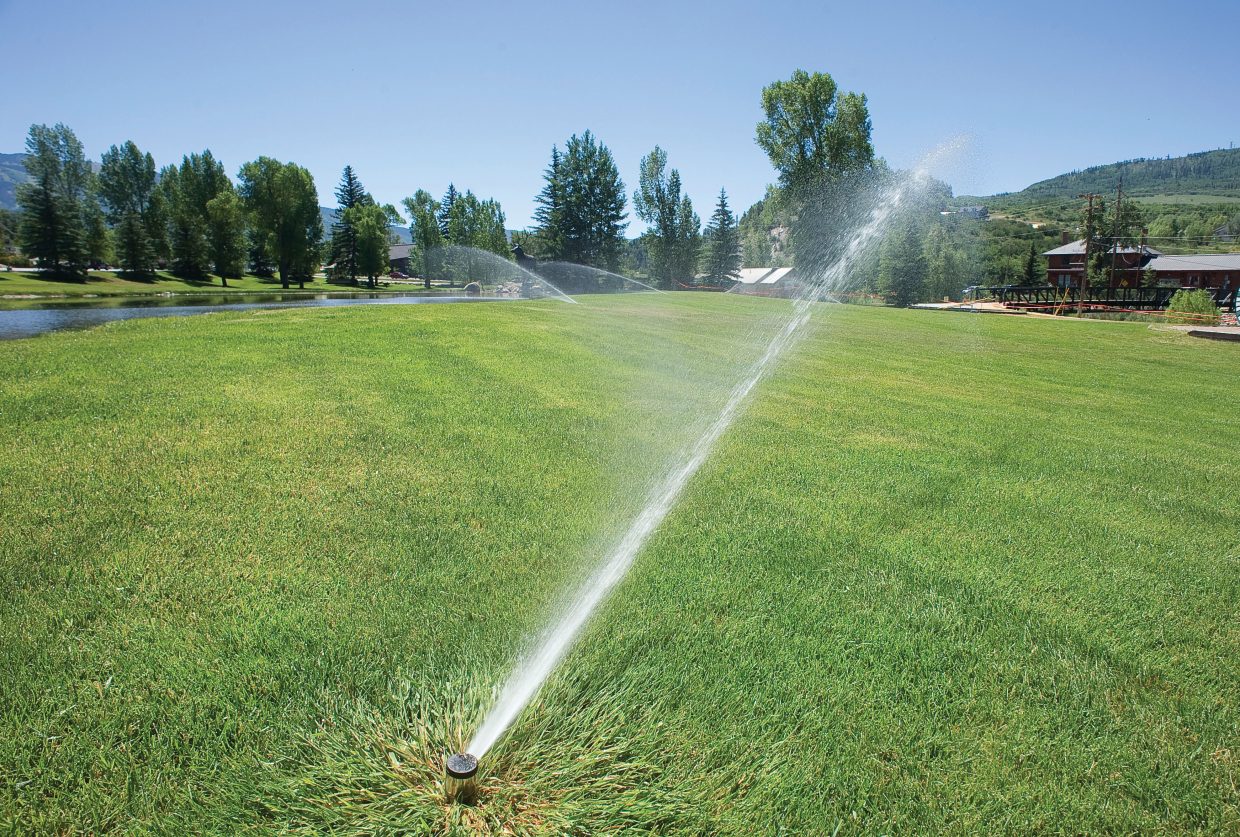City Council discusses progress, challenges in water conservation efforts

John F. Russell/Steamboat Pilot & Today
Steamboat Springs City Council members received a comprehensive update on the city’s water conservation efforts during its regular meeting last week, highlighting significant progress, ongoing challenges and future priorities tied to the city’s Climate Action Plan and strategic goals for environmental sustainability.
Julie Baxter, the city water resources manager, began the presentation by emphasizing Steamboat’s role as a drinking water provider and being a “critical lifeline utility” as arguably the “most important service” the city provides. She also discussed the importance of water conservation.
“Water conservation helps to improve the reliability of those water supplies during disasters, emergencies … like prolonged droughts, wildfires in the watershed,” Baxter said. “Water conservation also helps us to save money. It helps us to allow those water supplies to go further and delay expensive capital improvement projects … (which) helps us to avoid increases in the customers’ rates as well.”
Baxter added that water conservation helps to protect the Yampa River in times of drought, reduces chemicals used in water treatment and “demonstrates that Steamboat joins other Western Slope communities and municipalities in doing our part and taking initiative on water conservation.”
The presentation showcased notable achievements since the adoption of the 2020 Water Conservation Plan, established in partnership with the Mount Werner Water & Sanitation District.
The city’s water utility team shared data showing that despite a 16% population increase since 2006, water demand has remained mostly steady, “indicating an increased efficiency of use” thanks to water conservation measures.
Another key metric discussed was equivalent residential units, which measure water usage per household. The city set a goal in 2020 to reduce daily water use per equivalent residential unit by 10% by 2030.
While progress has been made toward this target, Baxter acknowledged challenges in reducing non-revenue water losses — water treated but not billed due to system leaks or meter inaccuracies.
“We’ve had issues with transmitters and meters going out and large water main breaks contributing to losses,” Baxter said. “We also know we’ve got an issue with meters at a couple of our large parks where the meters are not capturing all of the water use. And then we had a couple of really large water main breaks in 2022 and 2023 where we had significant water losses …”
To address these challenges, the city has ramped up its water main replacement program budget from $1 million to $2 million annually due to escalating costs, according to Baxter, who underscored how even small leaks can lead to substantial losses: “A quarter-inch hole in a water main can lose up to 13,000 gallons per day … the equivalent demand of about 70 three-bedroom homes.”
The city is also replacing outdated customer meters across approximately 3,200 accounts in 2025 and exploring software solutions to improve data tracking and asset management. These upgrades aim to enhance operational efficiency and support future initiatives like Aqua Hawk, a program that alerts customers about potential leaks.
Water-smart land use planning emerged as another priority area.
“One of the strategies is updating the landscaping standards in the community development code, which the planning department has been leading,” said Baxter.
Baxter also noted the city’s collaboration with Colorado Sate University’s One Water Solutions Institute on planning for different growth scenarios in water supply, the findings of which will inform updates to the community plan.
Education remains central to the city’s conservation strategy — Baxter outlined initiatives such as rebates for high-efficiency appliances and irrigation components, workshops on waterwise landscaping, and youth education programs through Yampatika.
A new program called Garden in a Box, developed with Resource Central, will offer residents kits for low-water landscaping.
A resident from Shadow Run Condominiums who spoke during the public comment period said that for residents at the complex, they don’t see their water bills, as they are funneled through the homeowners association.
“We don’t see our use, it’s not individually metered, and it wouldn’t be practical to meter it,” he said. He suggested that the city incentivize homeowners associations to tap into some of the programs mentioned.
Parks and Recreation Development Manager Aaron Stafford detailed advancements in smart irrigation technology across city parks. Projects completed between 2020 and 2024 include renovations at Ski Town Park and upgrades at other major parks.
“These technologies … will help us save water and money long-term,” Stafford said.

Support Local Journalism

Support Local Journalism
Readers around Steamboat and Routt County make the Steamboat Pilot & Today’s work possible. Your financial contribution supports our efforts to deliver quality, locally relevant journalism.
Now more than ever, your support is critical to help us keep our community informed about the evolving coronavirus pandemic and the impact it is having locally. Every contribution, however large or small, will make a difference.
Each donation will be used exclusively for the development and creation of increased news coverage.









